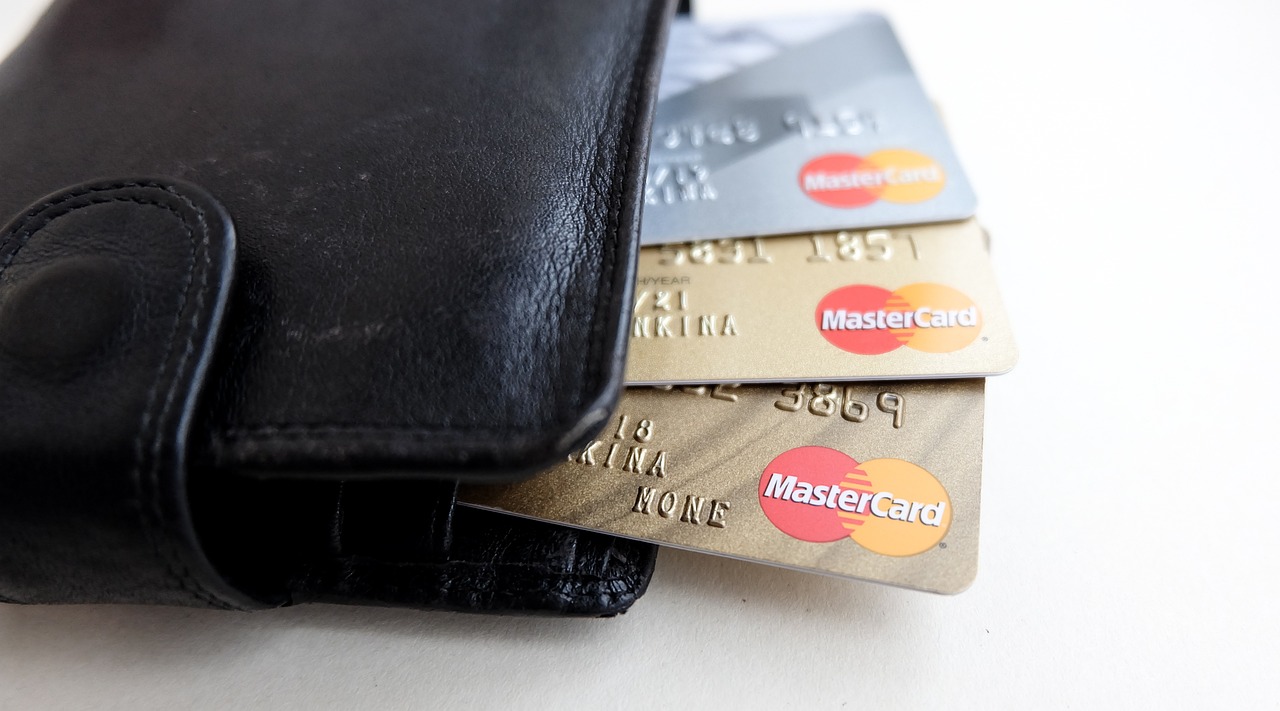
Paying bills is an essential part of managing our financial responsibilities, and in today’s digital age, the payment process has evolved to offer a plethora of convenient options. From traditional methods like checks and cash to the convenience of online and mobile payments, understanding the payment process is key to staying on top of our financial obligations. In this comprehensive guide, we’ll explore the various bill payment methods, tips for efficient payment processing, and how to ensure smooth and secure transactions.
Traditional Payment Methods:
1. Check Payments: Writing a check remains a popular method for bill payment. Simply fill out the check with the necessary details and mail it or drop it off at the recipient’s office.
2. Cash Payments: For in-person payments, cash is a straightforward option, although it may not be as traceable as other methods.
Online and Mobile Payment Options:
1. Online Banking: Most banks offer online bill payment services, allowing you to pay bills directly from your bank account. Schedule one-time or recurring payments for added convenience.
2. Mobile Banking Apps: Mobile banking apps offer bill payment features, enabling you to pay bills on the go using your smartphone or tablet.
3. Payment Platforms: Third-party payment platforms like PayPal, Venmo, and Zelle provide secure and fast ways to transfer money and pay bills electronically.

Efficient Payment Processing:
1. Set Up Reminders: Avoid late fees by setting up reminders for bill due dates. Use calendar apps or set alarms to stay on top of payment deadlines.
2. Automate Payments: If possible, automate recurring bill payments to ensure timely payments without manual intervention.
3. Monitor Billing Statements: Regularly review billing statements to check for any discrepancies and verify the accuracy of charges.
4. Choose Secure Platforms: When using online or mobile payment platforms, ensure that they employ robust security measures to protect your financial information.
Ensuring Secure Transactions:
1. Use Secure Networks: Only make bill payments from secure, private networks, especially when using sensitive information.
2. Protect Personal Information: Avoid sharing sensitive financial information via email or other unsecured channels.
3. Enable Multi-Factor Authentication: Opt for services that offer multi-factor authentication for an extra layer of security.
4. Check for SSL Encryption: Look for “https://” and a padlock symbol in the URL bar when making online payments, indicating a secure connection.
Common Payment Challenges and Solutions:
1. Insufficient Funds: Keep track of your account balance and schedule payments accordingly to avoid insufficient funds.
2. Overdue Payments: Contact billers if you foresee difficulties in making payments on time. They may offer payment plans or extensions.
Conclusion:
Mastering the art of bill payment and payment processing is crucial for maintaining financial stability and peace of mind. The evolution of payment methods has empowered us with a myriad of options to conveniently settle our financial obligations. From traditional checks and cash to online and mobile payment platforms, choosing the right method depends on our preferences and security concerns. By adopting efficient payment practices, staying vigilant about security, and leveraging technology to our advantage, we can navigate the world of bill payment with confidence and ease. Embrace the digital era of financial management, and let seamless payment processing be the catalyst for financial organization and a stress-free approach to handling your bills.
Related Posts
Beginner's Guide to Investing in Cryptocurrency: Navigating the Exciting World of Digital AssetsCryptocurrency has taken the financial world by storm, offering a revolutionary way to invest and transact in a digital landscape. While the crypto market can be intimidating for beginners, understanding the fundamentals and taking a strategic approach can unlock significant opportunities for potential gains. In this guide, we'll walk you through the essentials of investing in cryptocurrency, providing valuable insights to help you navigate this exciting and dynamic market with confidence. 1. Educate Yourself Before diving into the world of cryptocurrency investing, take the time to educate yourself about the various digital assets, their underlying technologies, and the market trends. Resources like books, online courses, and reputable websites can help you gain a solid understanding. 2. Start Small As a beginner, it's wise to start with a small investment that you can afford to lose. Cryptocurrency markets can be highly volatile, and it's essential to approach investing with a cautious…
Unlocking the Boundless World of IT Skills: A Comprehensive Guide to Learning and Thriving in the Digital AgeIn today's fast-paced and technology-driven world, having a strong foundation in Information Technology (IT) skills has become essential for personal and professional success. Whether you're looking to advance your career, start a new venture, or simply stay relevant in the digital age, acquiring IT skills is a transformative investment. In this comprehensive guide, we'll explore the importance of IT skills, the vast array of learning opportunities available, and essential tips to master these skills and thrive in the ever-evolving landscape of technology. The Significance of IT Skills: Information Technology encompasses a broad spectrum of skills that facilitate the management, analysis, and utilization of data and technology. In a world driven by data, automation, and innovation, IT skills have become indispensable across various industries. From basic computer literacy to specialized expertise in programming, cybersecurity, data analysis, and cloud computing, mastering IT skills opens doors to a multitude of career paths and…
Cycling Adventures: Exploring the World on Two WheelsCycling adventures offer a unique and exhilarating way to explore the world on two wheels. Whether you are a casual cyclist or an experienced rider, there are countless destinations and routes to choose from that will take you through breathtaking landscapes, diverse cultures, and unforgettable experiences. Here are some fantastic ideas for cycling adventures around the world: 1. The Danube Cycle Path (Europe): Follow the majestic Danube River as it winds its way through several European countries, including Germany, Austria, Slovakia, Hungary, Serbia, and Romania. This well-marked and relatively flat route offers a perfect blend of history, charming villages, and stunning natural scenery. 2. The Great Divide Mountain Bike Route (USA and Canada): For the more adventurous and experienced cyclists, this route stretches over 2,700 miles (4,345 kilometers) from Canada to Mexico, taking you through the rugged Rocky Mountains and showcasing the vast and diverse landscapes of North America. 3.…
McAfee Malware Protection: Safeguarding Your Digital WorldIn today's digital age, cybersecurity has become a paramount concern for individuals and businesses alike. Malware, short for malicious software, poses a significant threat to the safety and privacy of our online activities. One of the leading names in cybersecurity is McAfee, a renowned and trusted provider of malware protection solutions. In this article, we will explore the key features of McAfee malware protection and how it works to keep your digital world safe. What is McAfee Malware Protection? McAfee is a cybersecurity company that offers a wide range of products and services to protect users from various online threats, with a core focus on malware protection. Their software is designed to detect, prevent, and remove malware, including viruses, spyware, ransomware, and other malicious software that can harm your devices and compromise your sensitive data. Key Features of McAfee Malware Protection: 1. Real-Time Scanning: McAfee's malware protection works in real-time,…
Guide to Taking Care of Smooth and Curly HairHaving a combination of smooth and curly hair can be a blessing and a challenge. Each hair type requires different care and attention to maintain its health and beauty. In this comprehensive guide, we'll explore the essential tips and techniques to care for both smooth and curly hair, helping you embrace the unique beauty of your locks and keep them looking fabulous. 1. Know Your Hair Type Understanding your hair type is the first step in developing an effective hair care routine. Identify the areas where your hair is smooth and where it becomes curly or wavy. This knowledge will help you tailor your care to each section appropriately. 2. Use a Suitable Shampoo and Conditioner Invest in a shampoo and conditioner designed for your hair type. For smooth sections, look for products that promote shine and hydration without weighing the hair down. For curly areas, opt for moisturizing and…
Crafting Timeless Elegance: A Guide to Choosing Handmade JewelryHandmade jewelry exudes a unique charm and allure that sets it apart from mass-produced pieces. Each handcrafted item carries the artisan's passion, creativity, and dedication, making it a special and meaningful addition to your collection. However, selecting the perfect handmade jewelry piece can be an enriching yet overwhelming experience. In this article, we'll guide you through the process of choosing handmade jewelry that complements your style and captures the essence of craftsmanship. 1. Discover Your Personal Style Before embarking on your quest for the perfect handmade jewelry, take a moment to understand your personal style. Are you drawn to minimalistic designs, bohemian aesthetics, or vintage-inspired pieces? Knowing your style preferences will help narrow down your choices and make the selection process more enjoyable. 2. Seek Quality Craftsmanship Handmade jewelry is a testament to the artisan's skill and artistry. When choosing a piece, look for exceptional craftsmanship that showcases attention to…
Video Making 101: A Beginner's Guide to Getting StartedVideo making can be a fun and rewarding creative pursuit. Whether you want to make videos for personal enjoyment, social media, or even a potential career, this beginner's guide will help you get started on the right foot. Let's break it down into steps: 1. Define Your Purpose: - Decide what type of videos you want to create (e.g., vlogs, tutorials, travel videos, storytelling, etc.). - Determine your target audience and what message you want to convey. 2. Plan Your Content: - Outline the structure of your video, including the introduction, main content, and conclusion. - Create a script or a rough outline to guide your filming and ensure you cover all important points. 3. Choose Your Equipment: - Smartphones: For basic videos, modern smartphones can work well with their built-in cameras. - Cameras: If you want higher quality, consider a DSLR, mirrorless camera, or camcorder. - Audio: Invest in…
The Ultimate Guide to Weight Loss: Tips and StrategiesLosing weight requires a combination of healthy eating habits, regular physical activity, and lifestyle adjustments. Here's a comprehensive guide with tips and strategies to help you achieve your weight loss goals: 1. Set Realistic Goals: Establish achievable and measurable weight loss goals. Aim for steady progress rather than quick fixes, as sustainable weight loss is a gradual process. 2. Consult a Healthcare Professional: Before starting any weight loss program, consult your doctor or a registered dietitian to ensure your plan is safe and appropriate for your individual needs. 3. Create a Calorie Deficit: Weight loss occurs when you burn more calories than you consume. Calculate your daily caloric needs and aim to eat fewer calories than your body burns. 4. Balanced Diet: Focus on a balanced diet that includes a variety of nutrient-dense foods such as fruits, vegetables, whole grains, lean proteins, and healthy fats. 5. Portion Control: Be mindful…
Stepping in Style: A Guide to Selecting Chic Boots for WomenBoots are a timeless and versatile footwear choice that can instantly elevate any outfit, adding a touch of sophistication and style. From classic ankle boots to knee-high stunners, there's a boot style to suit every woman's taste and personality. In this guide, we'll walk you through the key factors to consider when selecting stylish boots for women, ensuring you step out in fashion-forward footwear that makes a statement. 1. Know Your Style Preferences Before diving into the world of boots, consider your style preferences. Are you drawn to classic and timeless designs, or do you prefer trendy and bold styles? Understanding your style preferences will help you narrow down your options. 2. Choose the Right Boot Height Boots come in various heights, including ankle, calf, knee-high, and over-the-knee. Select a height that complements your body type and the outfits you plan to wear with them. 3. Consider Your Comfort Level…
Step-by-Step Guide to Achieving Your Fitness GoalsSetting fitness goals is a powerful step towards transforming your health and well-being. Whether you aspire to lose weight, build strength, run a marathon, or simply lead a more active lifestyle, having a clear vision and a well-defined plan is essential for success. In this comprehensive guide, we'll walk you through the key steps to help you achieve your fitness goals and unlock the best version of yourself. 1. Set Specific Goals: Define your fitness objectives with clarity. Whether it's running a certain distance, lifting a specific weight, or improving your endurance, setting specific goals provides focus and direction. 2. Make Your Goals Realistic: While it's great to aim high, ensure that your goals are attainable within a reasonable timeframe. Unrealistic targets can lead to disappointment and demotivation. 3. Break Down Your Goals: Divide your long-term goals into smaller, manageable milestones. Celebrating these small victories will keep you motivated and…



